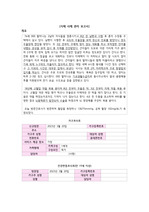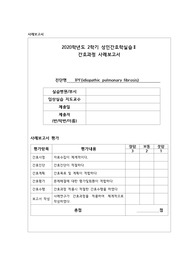

목차
1. 개요
2. 가구조사표
3. 건강면접조사표
3. 기본건강정보
4. 건강행태
5. 복용 약
6. 대상자 요구 파악
7. 문제점 파악
8. 오마하 간호진단
9. BPRS 우선순위
10. 간호계획
11. 사례관리 성공 및 부진 요인
12. 사회적 관계망 변화
본문내용
초기접촉(방문간호를 통한 사례관리)
대상자의 집에 방문하여 서로 자신을 소개하고 간단한 이야기를 나눈 뒤 혈압과 혈당을 측정하였다. 그 후 현재 아픈곳이 있는지, 도움이 필요한지에 대하여 사정하였다.
대상자는 평소 말하는것을 매우 좋아하는데 가족 이외의 사람과 대화하면 자신의 치매때문에 상대방에게 헛소리를 할까봐 두렵다고 했다. 그래서 먼저 말을 걸어주는 간호사 선생님이 고맙다고 하셨다. 또 같이 간 간호학과 학생이 자신의 손녀와 나이가 같다며 매우 반기는 모습을 보였다. 또 혼자서는 할 수 없었던 화장실 전구교체를 도와달라고 요청하셨다.
식사는 주로 어떤것을 드시냐고 여쭤보니 그냥 흰쌀밥과 김치만 드신다고 하셨다. 이유를 여쭤보니 어떤걸 먹어야할지도 모르겠다고 하셨다. 고혈압에 좋은 음식이 무엇이 있는지 질문하셨다. 또 요즘 더욱 기억력이 안좋아진것 같아 치매가 더 심해져서 나중에는 가족도 못알아볼까봐 두렵다고 하셨다. 오늘이 몇월 며칠이냐고 질문하였을 때 한참을 생가가는 모습을 보였다. 보건소에서 진행하는 치매프로그램에 참여할 의향이 있냐고 여쭤봤을때 그렇다고 답하셨고 치매를 관리하는 방법에 대해 알고싶다고 하셨다.
출처 : 해피캠퍼스

















